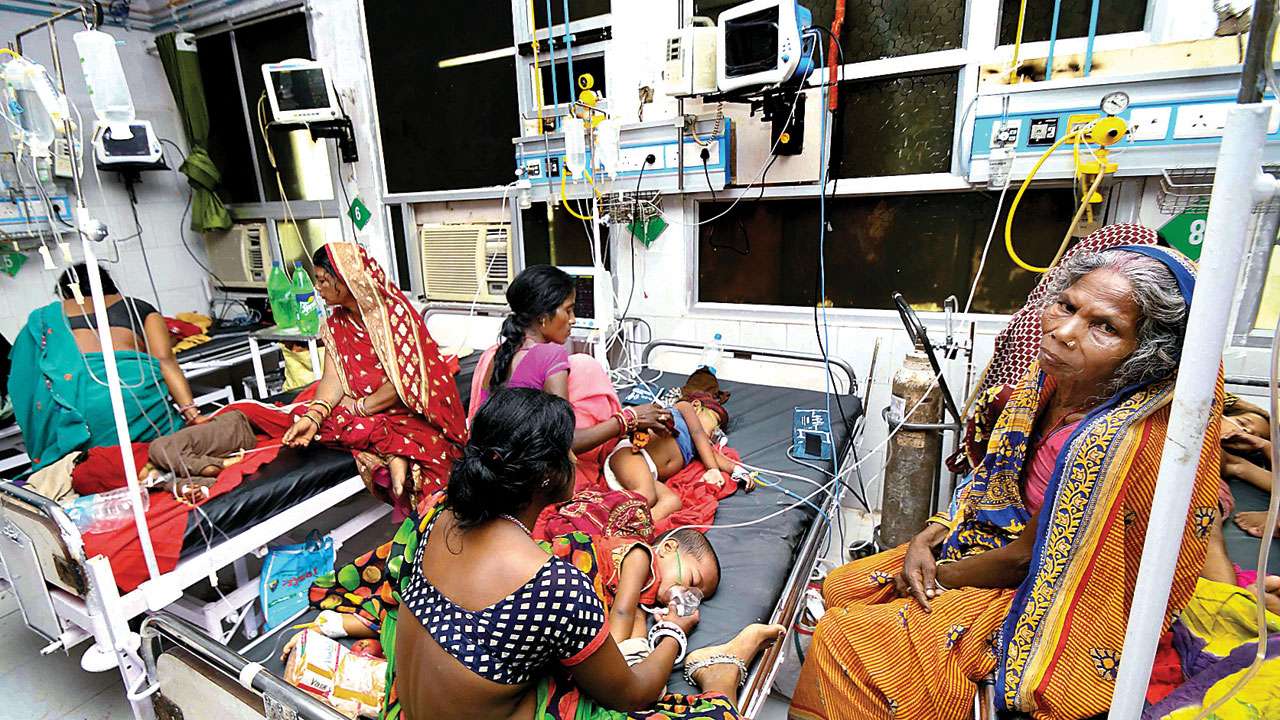
Litchis, Muzaffarpur’s most famous summer fruit, has turned out to be an unlikely killer. Since times immemorial, this north Bihar city has prided itself on the quality of litchis, consumed both by the elite and laity in ample measure. This year, it has turned out to be different. Doctors say that the delicious litchis, if consumed on an empty stomach that is already malnourished in blazing heat, can produce toxic results. While admittedly, the exact cause of the disease has eluded researchers thus far, extreme poverty has a big role to play in the death of close to 150 children by acute encephalitis syndrome or AES. It can be no coincidence that the vast majority of children who have succumbed to this fever belong to the most backward communities in this area. That Bihar’s healthcare system – further crippled by the ongoing doctors’ agitation – is in absolute shambles, is to make the understatement of the year.
Despite previous instances of this strand of encephalitis in the Muzaffarpur district claiming lives, no steps were taken to counter the menace or attempts made to spread awareness about the illness. Between 2000 and 2010, more than 1,000 children in this one district lost their lives due to this infection. A rigorous public campaign could certainly have helped. That the authorities did not deem it fit to go that far to save impoverished lives, reveals that beyond winning elections, nothing really matters to politicians - and health is no poll-time issue. Not surprisingly, measures to counter the virus have proved to be effective, when implemented. In 2006, the government began a vaccination campaign against Japanese encephalitis (JE), a cousin of AES, with encouraging results. JE cases have dropped since that campaign.
In 2018, while AES claimed 636 lives, the JE toll stood at 182. To be sure, medical research in India is at a pretty nascent stage and a lot of ground needs to be covered before antidotes to diseases like AES are found. Yet, a beginning has to be made somewhere. In 2012, a paper published by Muzzafarpur’s Sri Krishna Medical College and Hospital stated that 55 AES samples sent to Pune’s National Institute of Virology had tested negative for any virus, establishing the non-infectious origin of the disease. Then again in 2014, US-based Centres for Disease Control and Prevention conducted an investigation into 390 cases and found no confirmatory evidence of any infection. Some other hypotheses have suggested the usage of pesticides, while a 2017 Lancet paper hinted at litchi toxin being the prime reason for the disease.
But beyond a shadow of doubt, poverty and malnutrition are the principal reasons for this and any other ailment when it assumes epidemic-like proportions. The National Family Health Survey, 2015-16, pointed out to the high rate of malnutrition in children under five in Bihar, leading to among other malaises, stunted growth. Unless the state takes radical measures to upgrade its health infrastructure, diseases like AES and its many variants would continue to haunt it.